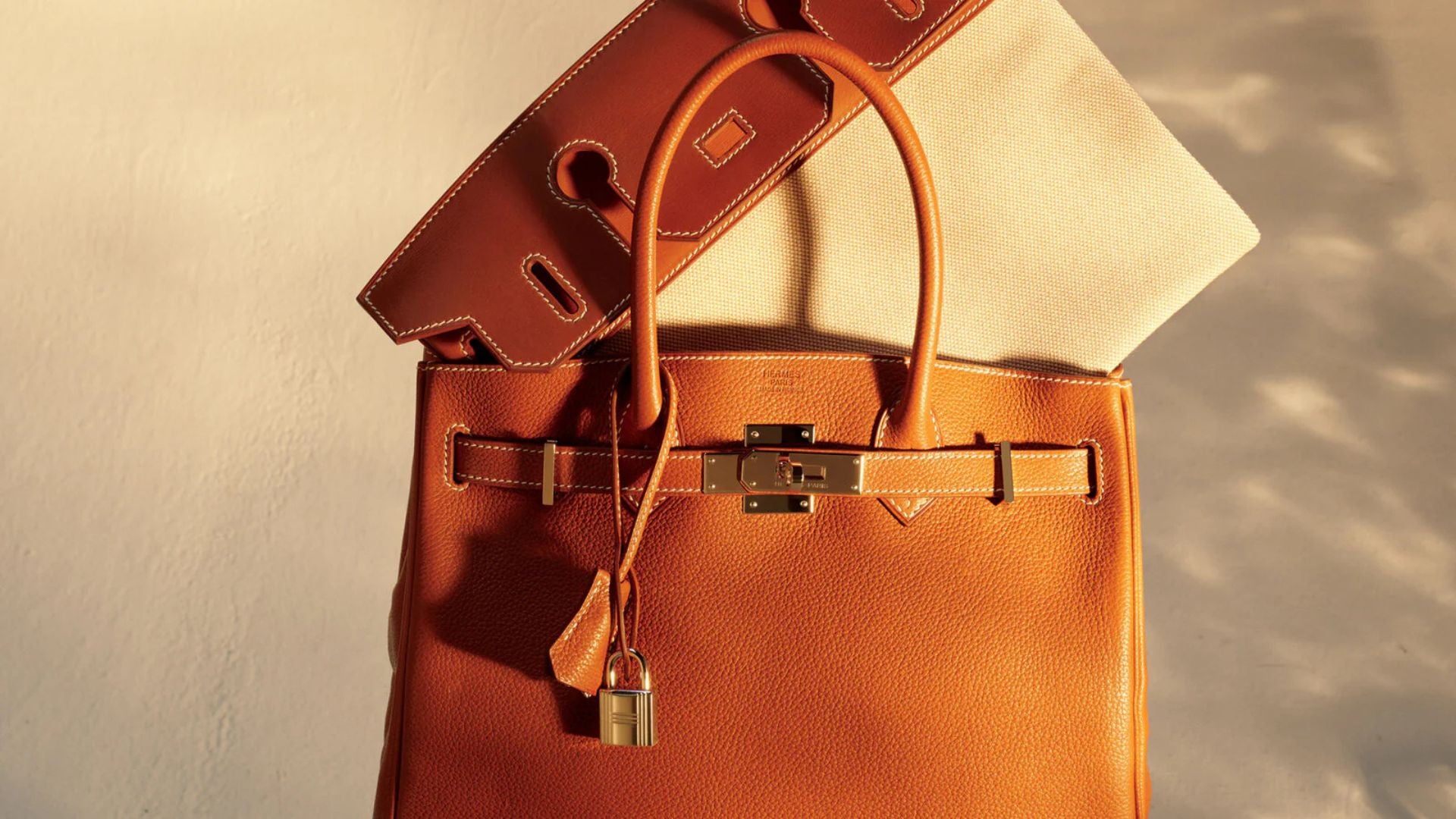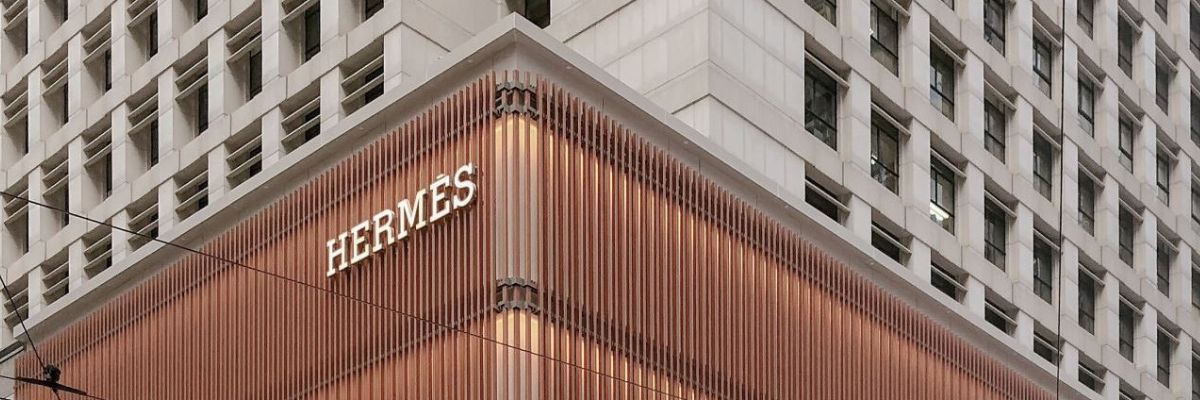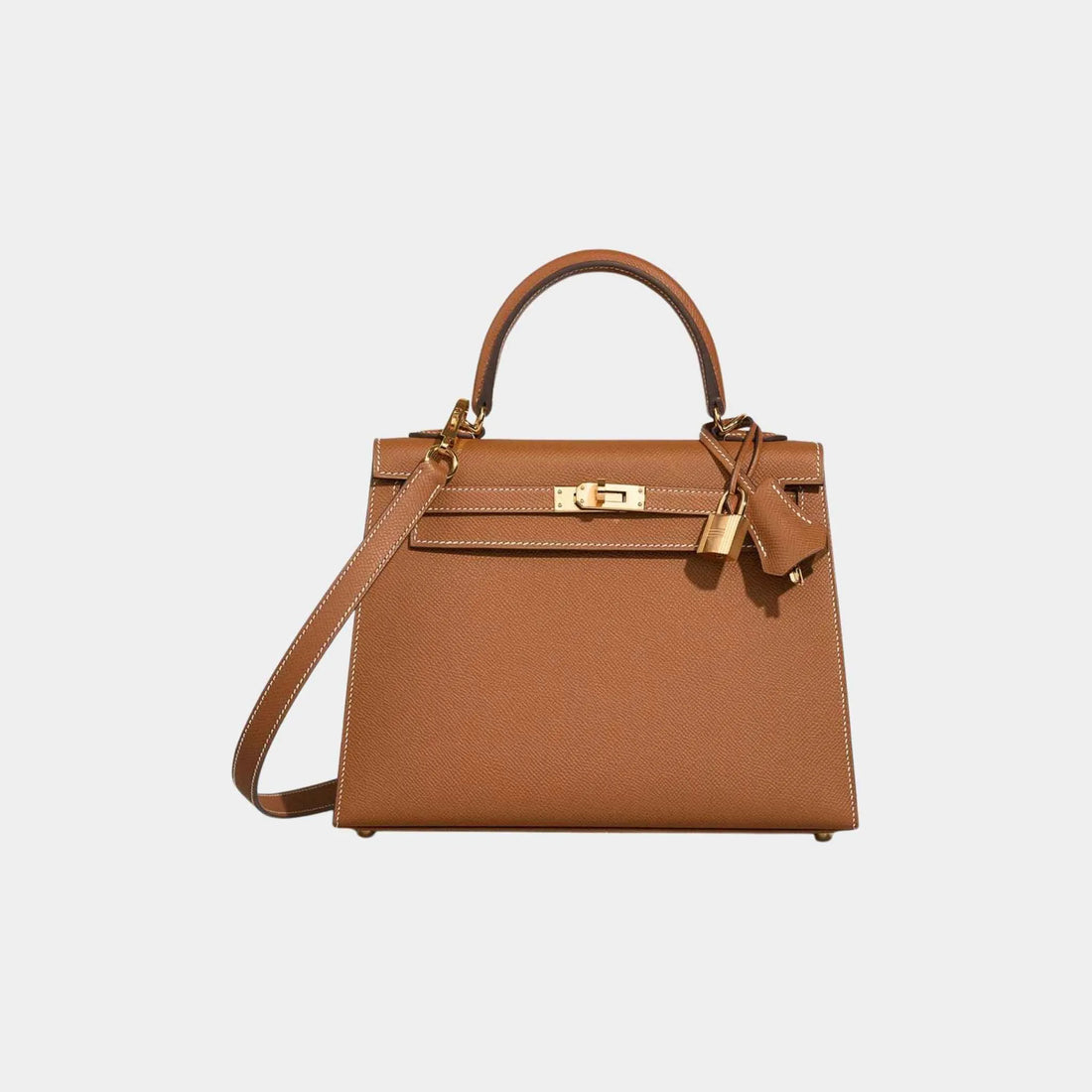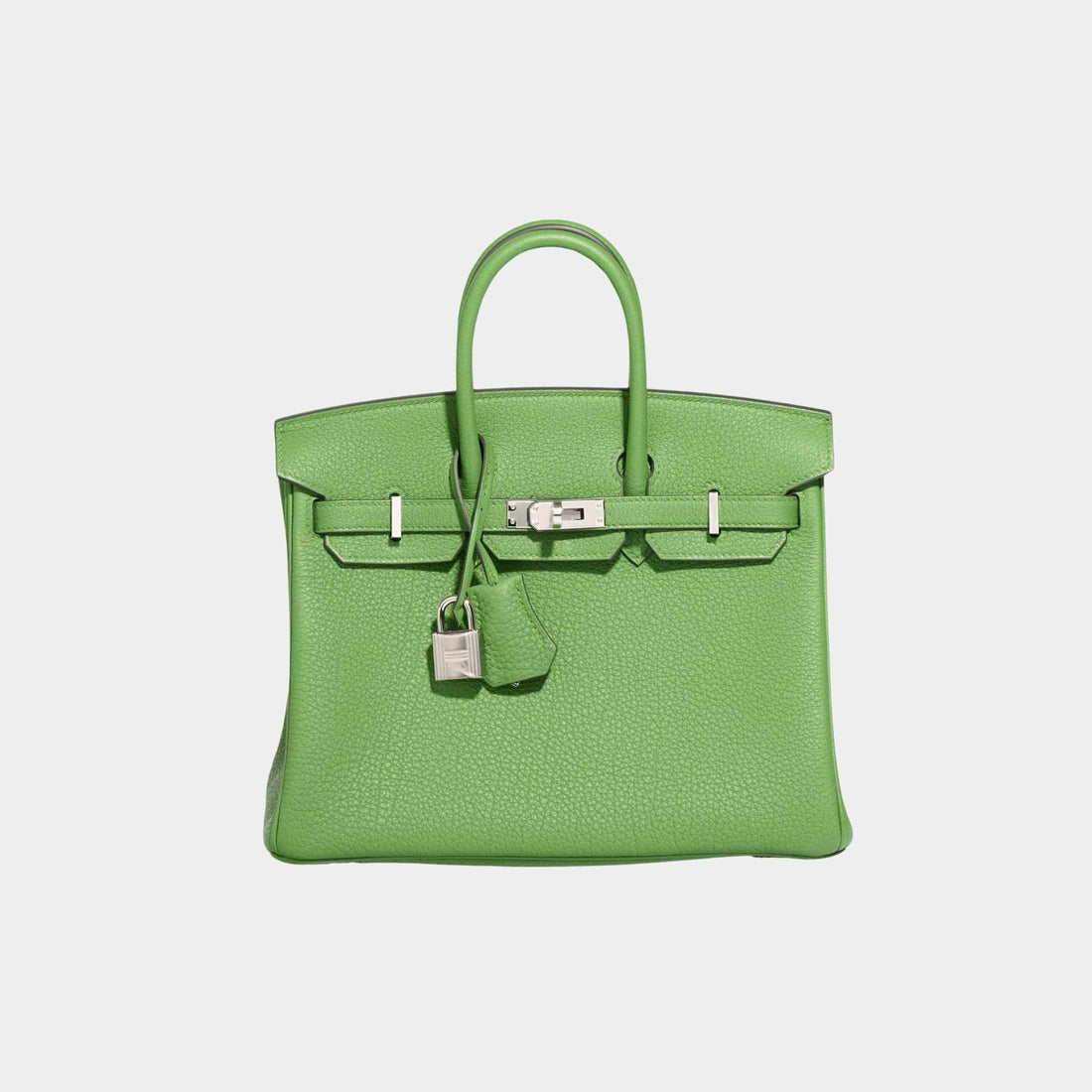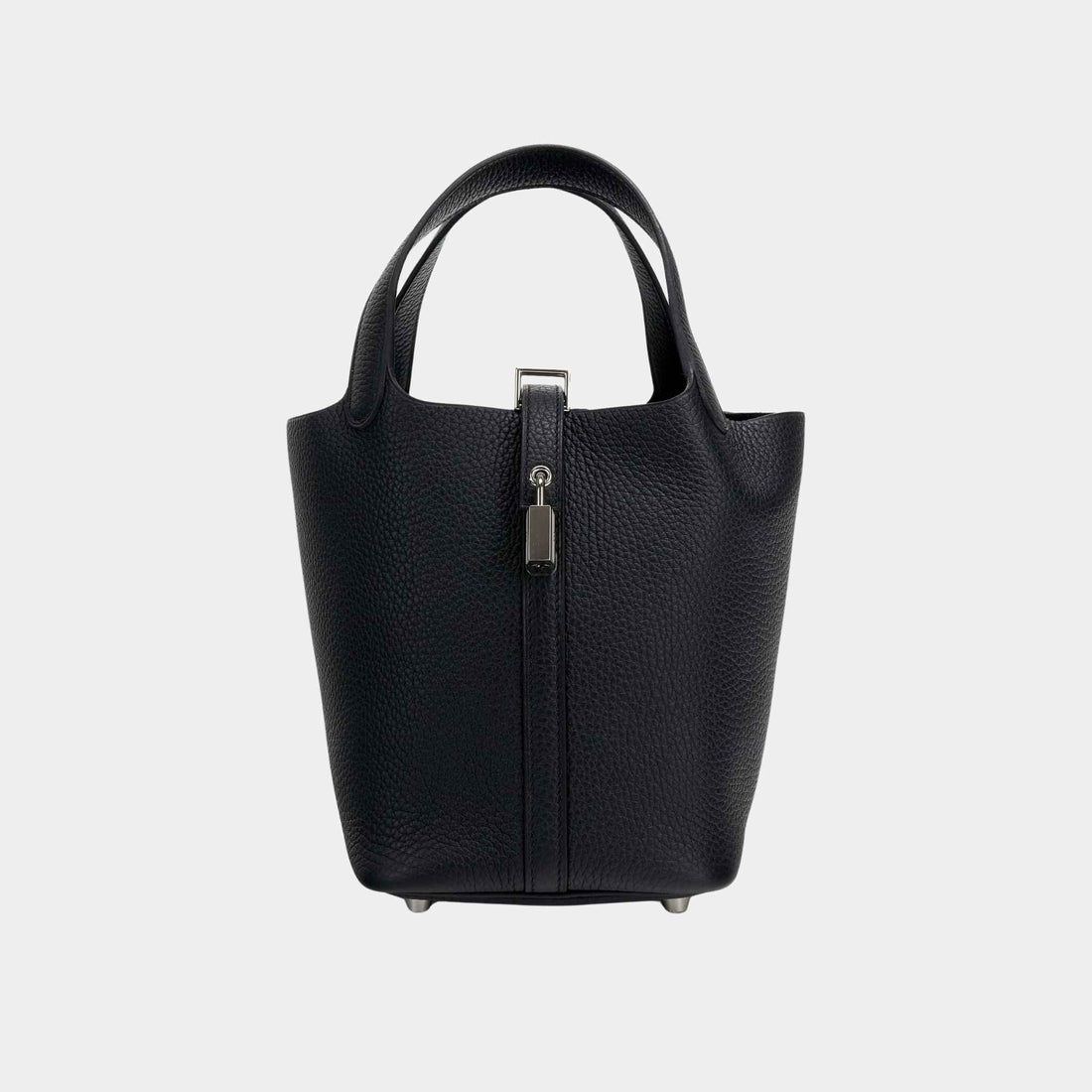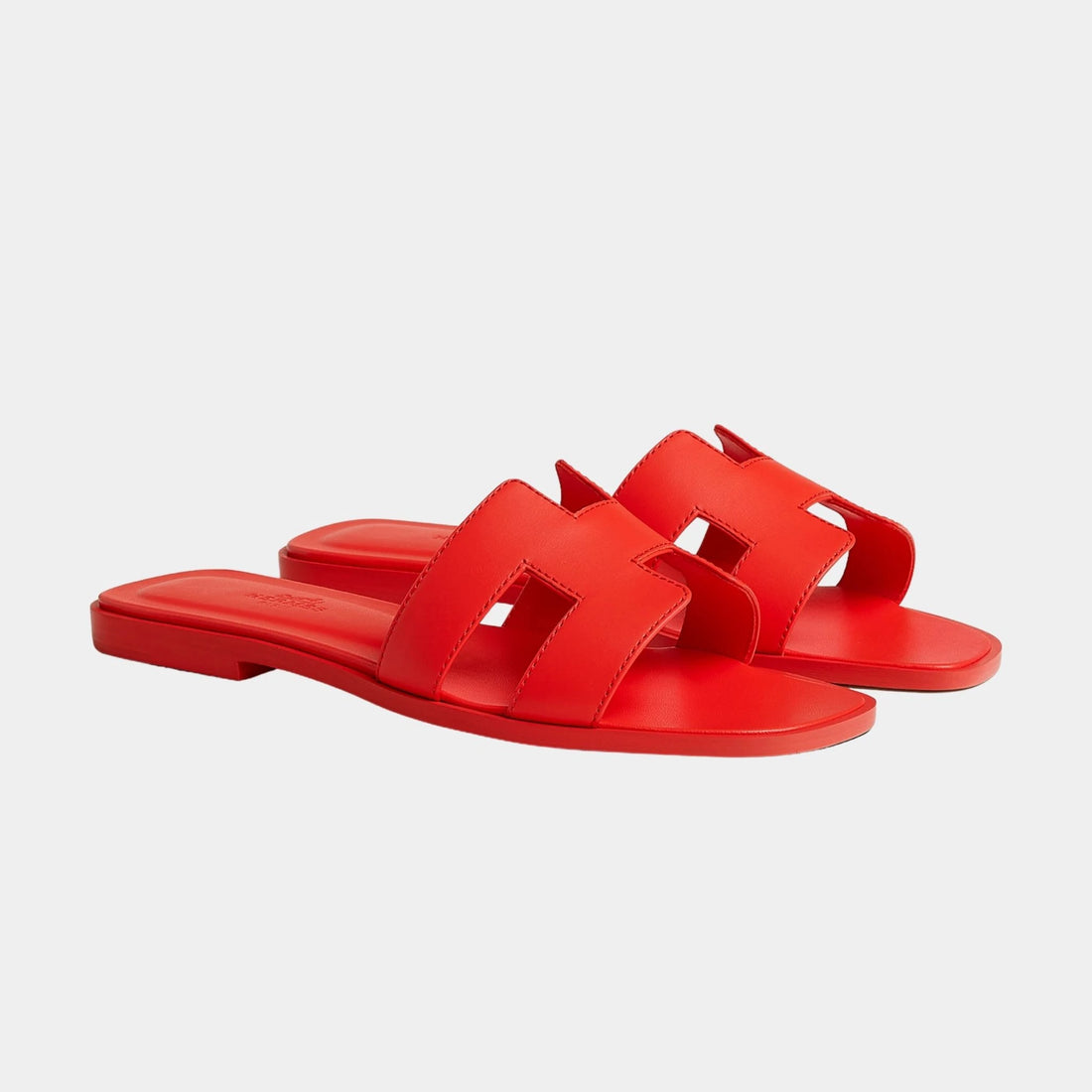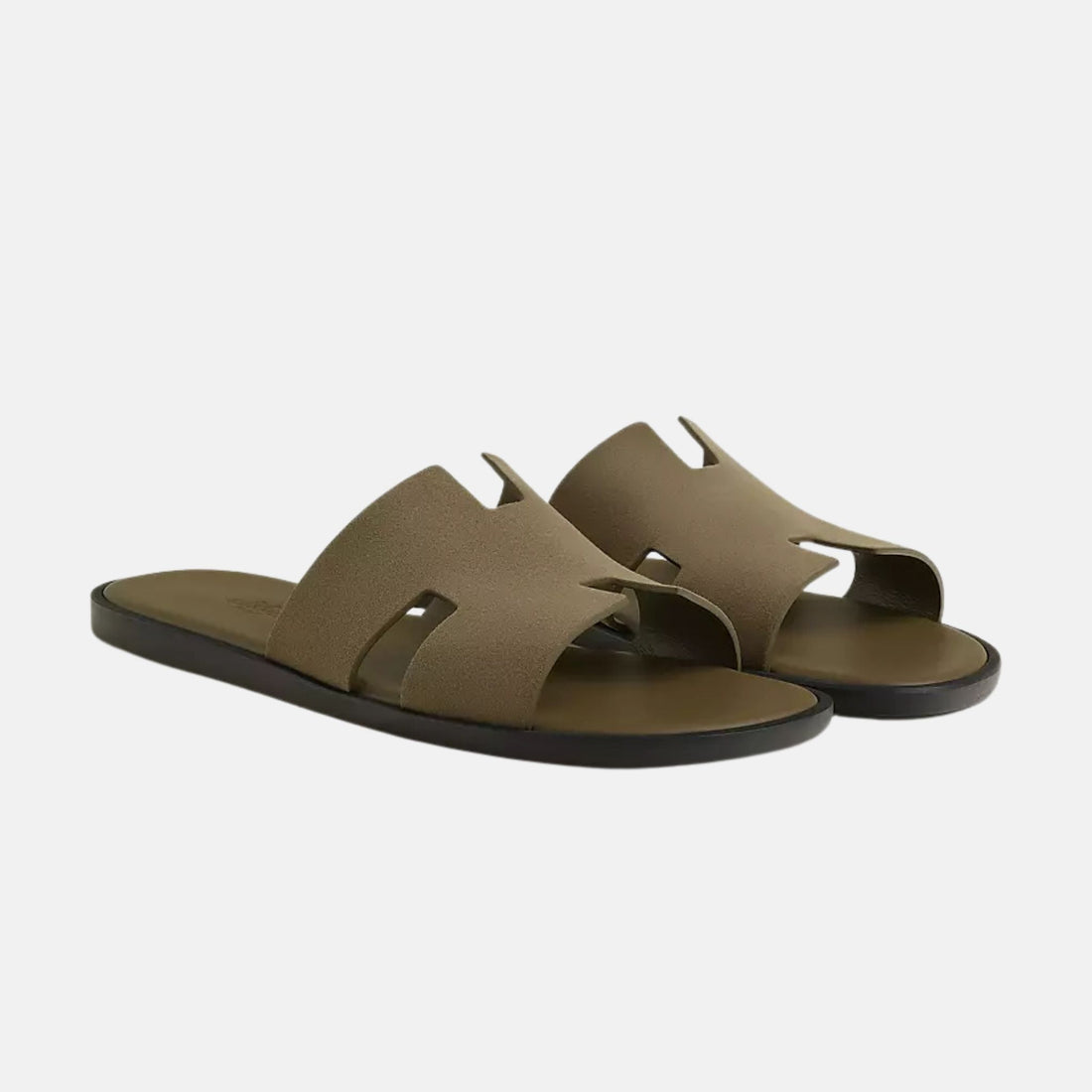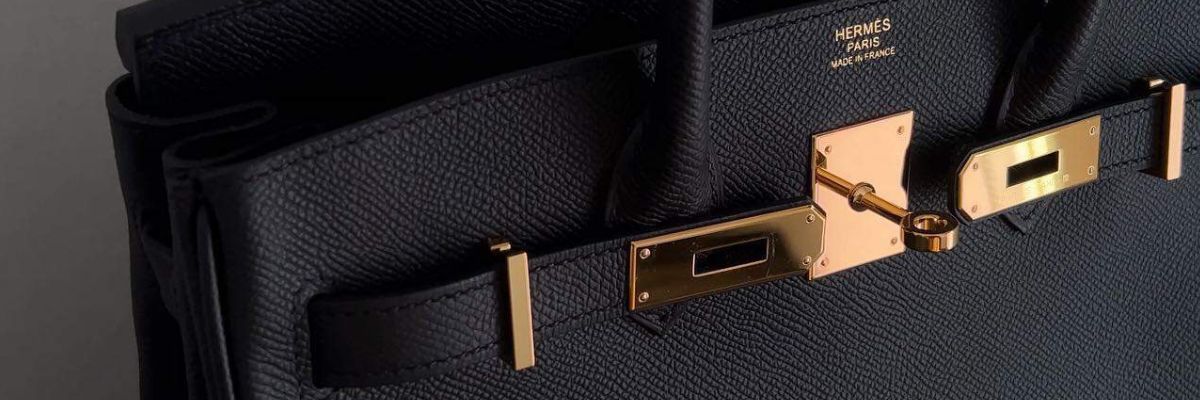Introduction
THE WORLD OF HERMES
THE ICONS
PARTNERSHIPS
MATERIALS THAT DEFINE Hermès
Hermès Repairs and Service
Celebrity Obsession
Frequently Asked Questions
Collections
Introduction
Beginnings in 1837
Paris in 1837 was a city of contrasts and change. Under the July Monarchy of King Louis-Philippe, the French capital’s population was booming and its narrow medieval streets were alive with activity. Horse-drawn carriages still dominated the roads, even as the first railway stations began appearing on the city’s outskirts in that decade. It was amid this setting that a young harness-maker named Thierry Hermès opened a small workshop in Paris in 1837, laying the cornerstone of what would become an iconic luxury house.
Portrait of Thierry Hermès (1801–1878), who founded the house of Hermès in 1837 as a harness workshop in Paris. In the early days, Thierry Hermès distinguished himself by using the finest materials and meticulous hand-stitching, creating bridles and harnesses that were both elegant and enduring. His craftsmanship met the needs of a city teeming with equestrian traffic, and it earned international praise – Hermès won medals for technical excellence at the Paris Expositions Universelles of 1855 and 1867. The elite soon took notice: by the 1860s his clientele included Emperor Napoleon III and Empress Eugénie, who turned to Hermès for finely made carriage accoutrements. Thanks to this reputation, by the time Thierry Hermès passed away in 1878 his name had become synonymous with the very finest saddlery in Paris.
From Saddles to Silk: Expansion into Fashion
Leadership of the business passed to Thierry’s son, Charles-Émile Hermès, who in 1880 relocated the shop to 24 Rue du Faubourg Saint-Honoré – a prestigious address that soon became the heart of Hermès for generations. From this new atelier-boutique, the house continued to serve Europe’s wealthy carriage owners with made-to-measure harnesses and saddles, further burnishing its reputation for superb quality. As the 20th century dawned, the third generation of the family stepped forward to guide Hermès. Charles-Émile’s sons, Adolphe and Émile-Maurice Hermès, helped expand the business internationally, supplying custom equestrian goods to elite clients as far afield as Russia, Asia, and the Americas. Recognizing that the world was changing—Adolphe reportedly foresaw the coming age of the horseless carriage—Émile-Maurice prepared to steer the company beyond its horse-and-carriage origins.
Émile-Maurice proved especially visionary in adapting Hermès to the new century. During World War I he traveled to North America and secured a patent for a novel fastener, the zipper, making Hermès the first to introduce this invention in France. (So closely did the zipper become associated with the house that it was nicknamed fermeture Hermès, or “the Hermès fastener.”) In 1919, Émile-Maurice bought out his brother’s share of the company and became sole head of the firm. Over the next few years he broadened Hermès’s scope: the company began crafting luxe travel trunks, leather luggage and handbags, applying its signature hand–stitched saddle seams to serve the era of automobiles, trains, and steamships. By the 1930s, Hermès’s offerings extended well beyond the stable. The house introduced its first silk carrés (scarves) – the debut design appeared in 1937 – and it launched finely crafted leather handbags that would become fashion icons, most famously the Sac à dépêches purse later known as the Kelly bag after Princess Grace of Monaco. These ventures into handbags, travel accessories and silk fabrics signaled Hermès’s transformation from a saddle-maker into a broader luxury purveyor, even as it continued to honor its equestrian heritage in motif and craftsmanship.
A Family Legacy
Through all this growth, Hermès remained a proudly family-run enterprise. After Émile-Maurice’s death in 1951, leadership passed to his son-in-law Robert Dumas – marking the first time the CEO did not bear the Hermès surname, though he was very much part of the family. Robert Dumas and the next generation continued to broaden the brand’s horizons, introducing new product lines like silk neckties, perfumes and timepieces, all while fiercely guarding the house’s commitment to quality craftsmanship. In 1978, Jean-Louis Dumas (Robert’s son and a great-great-grandson of Thierry Hermès) took the helm as chief executive, guiding the company through a period of global expansion in the late 20th century. Even when Hermès pursued a public stock offering in 1993, the founding family retained control of over 80% of the firm’s shares – a testament to their ongoing dedication to independent family ownership.
Today, Hermès is still led by its founding family. Since 2013 the company’s CEO has been Axel Dumas, a sixth-generation descendant of Thierry Hermès. Many other family members remain actively involved in management, helping to preserve the unique heritage and values of the house even as it thrives as a modern global luxury brand. The Hermès saga – nearly two centuries of innovation and evolution under one family’s stewardship – all stems from the vision of its founder. Indeed, the business Thierry Hermès established in 1837 would, under his successors, grow from making horse harnesses to producing the very handbags, silk scarves and other treasures that define the Hermès name today. It is only fitting, then, to turn to the story of Thierry Hermès himself, the man whose foresight and artistry set this enduring family legacy in motion.
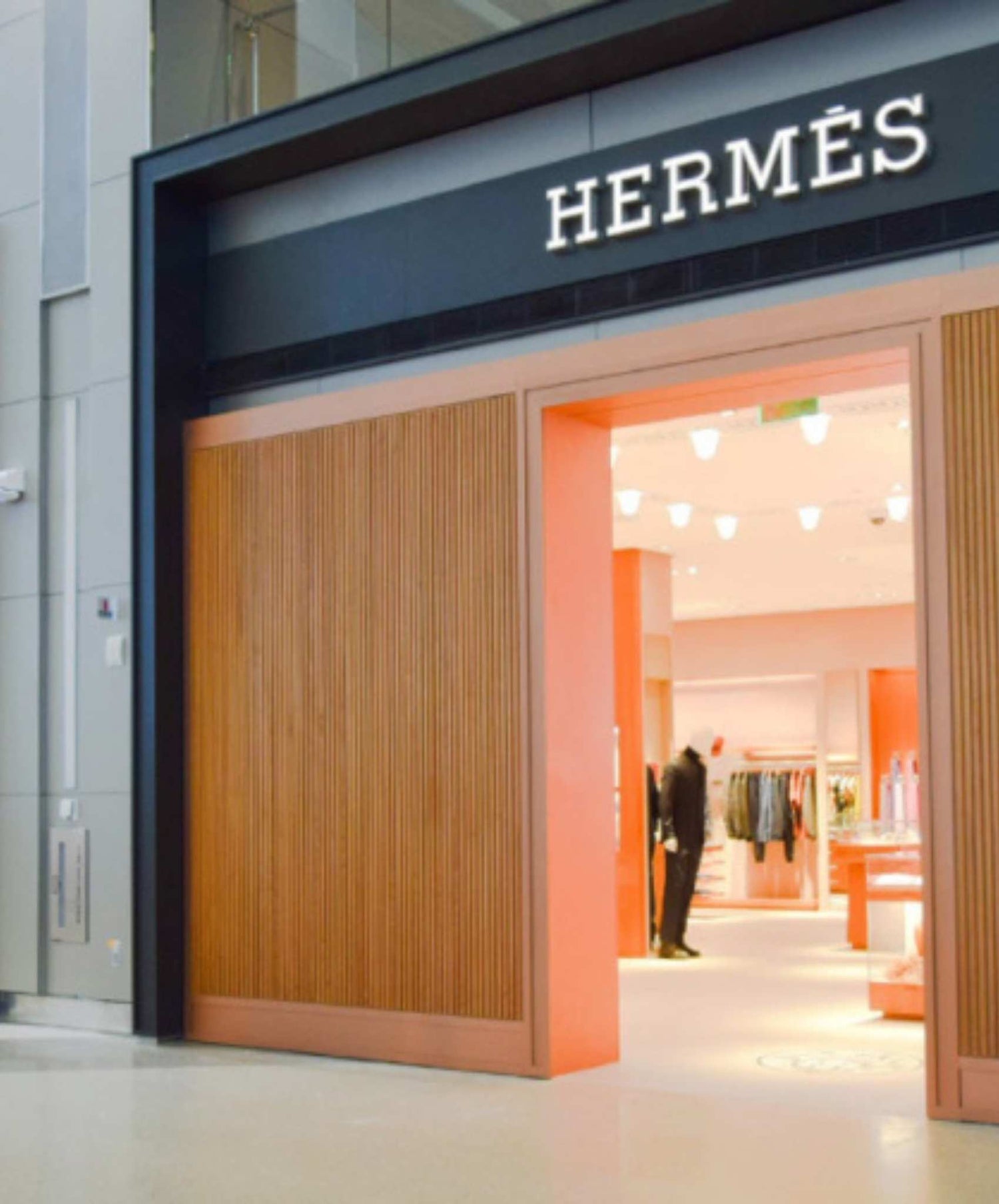
The World Of Hermes
Hermès in the United Arab Emirates (UAE)
Hermès first arrived in the UAE in 2004 with the opening of its first boutique in Dubai, marking the brand’s official debut in the Middle East. The store introduced Emirati shoppers to Hermès’s signature silk scarves, handbags, and deep equestrian heritage. In 2012, Hermès expanded to the capital with its first Abu Dhabi boutique inside Etihad Towers. This elegant store was developed in collaboration with the Al Mana Group, offering a quiet, tailored shopping experience for Abu Dhabi’s luxury clientele.
By 2016, Hermès expanded further in Dubai with a new store inside Mall of the Emirates. According to Executive VP Florian Craen, this was a unique addition to their growing portfolio, representing 12 years of success in the UAE. Meanwhile, Hermès’s Dubai Mall flagship was also upgraded in 2018 into a three-level boutique at the base of the Burj Khalifa, designed as a true “enchanted world” of Hermès craftsmanship and luxury. This Dubai Mall boutique quickly became one of the brand’s largest worldwide, reinforcing the city’s global luxury reputation.
In 2023, Hermès opened a new flagship store in The Galleria Al Maryah Island, Abu Dhabi, replacing the former Etihad Towers shop. Designed by Parisian architects, the new store brings together all Hermès métiers under one roof, from men’s and women’s fashion to home decor and saddlery. The expansion reflects the brand’s long-term confidence in the UAE market and its dedication to immersive retail experiences.
Each UAE store has its own personality but maintains the same Hermès elegance and attention to detail. Since the very first opening in Dubai, Hermès has remained a favorite among Emiratis and visitors alike. These boutiques often host exclusive events and art installations, like the window display that marked the launch of the new Abu Dhabi store. From one boutique in 2004 to today’s flagships, Hermès’s journey in the UAE reflects both strong demand and a deep respect for regional luxury culture.
Hermès’s Global Expansion
Hermès started as a harness workshop in Paris in 1837 and slowly evolved into one of the world’s leading luxury brands. Its international journey began in the late 1800s, when the family was already serving elite clients in Europe, Russia, and Asia, according to Pompidoo. In 1924, Hermès made a big leap by entering the United States, opening boutiques outside of France. Products had already reached New York in the early 1920s, though the brand briefly pulled back during the Great Depression.
In 1949, Hermès became the first Western luxury house to open inside a Japanese department store, Mitsukoshi in Tokyo, as documented by Borro. This move laid the foundation for Hermès’s long-standing popularity in Japan. By the 1970s, Hermès was operating multiple shops across Japan, including a Tokyo boutique with an in-house atelier, as seen on Europa Star.
The 1970s were a turning point. Under CEO Robert Dumas and later Jean-Louis Dumas, the company rapidly opened new stores in the US, Europe, and Asia. In 1975, Hermès opened a flagship store in London’s Mayfair, which it still occupies today. Although it briefly fell behind some trendier rivals in the late '70s, Jean-Louis revived the brand through the 1980s and expanded its retail network to more than 200 stores by the 1990s.
In 1996, Hermès opened its first store in Beijing, betting early on China’s rising luxury demand. This move paved the way for major growth across China. In 2014, Hermès unveiled a massive Maison Hermès in Shanghai, cementing China as one of its top markets. Today, the company operates over 20 boutiques across the mainland, with China making up a large share of global sales.
As the 2000s began, Hermès opened more of its signature Maison stores. In 2000, it launched a striking Maison Hermès on Madison Avenue in New York, followed by a modernist tower in Tokyo’s Ginza district in 2001, designed by Renzo Piano. That store even includes a gallery space and workshops. Hermès continued to expand in places like Seoul, Australia, and South America. At the same time, the brand strengthened its European footprint by turning franchise stores into official Hermès boutiques in cities like Berlin and Istanbul.
In 2019, Hermès opened its first boutique in Warsaw, Poland, showing that even after 180 years, it’s still exploring new markets. Today, Hermès operates more than 300 stores in over 50 countries. It carefully designs each flagship to reflect both its Parisian roots and the local culture.
Hermès’s worldwide growth has always been guided by its core values – quality, craftsmanship, and family ownership. These principles have helped the brand evolve from a single workshop into a global symbol of understated luxury, with stores everywhere from Abu Dhabi to New York, Shanghai to São Paulo.
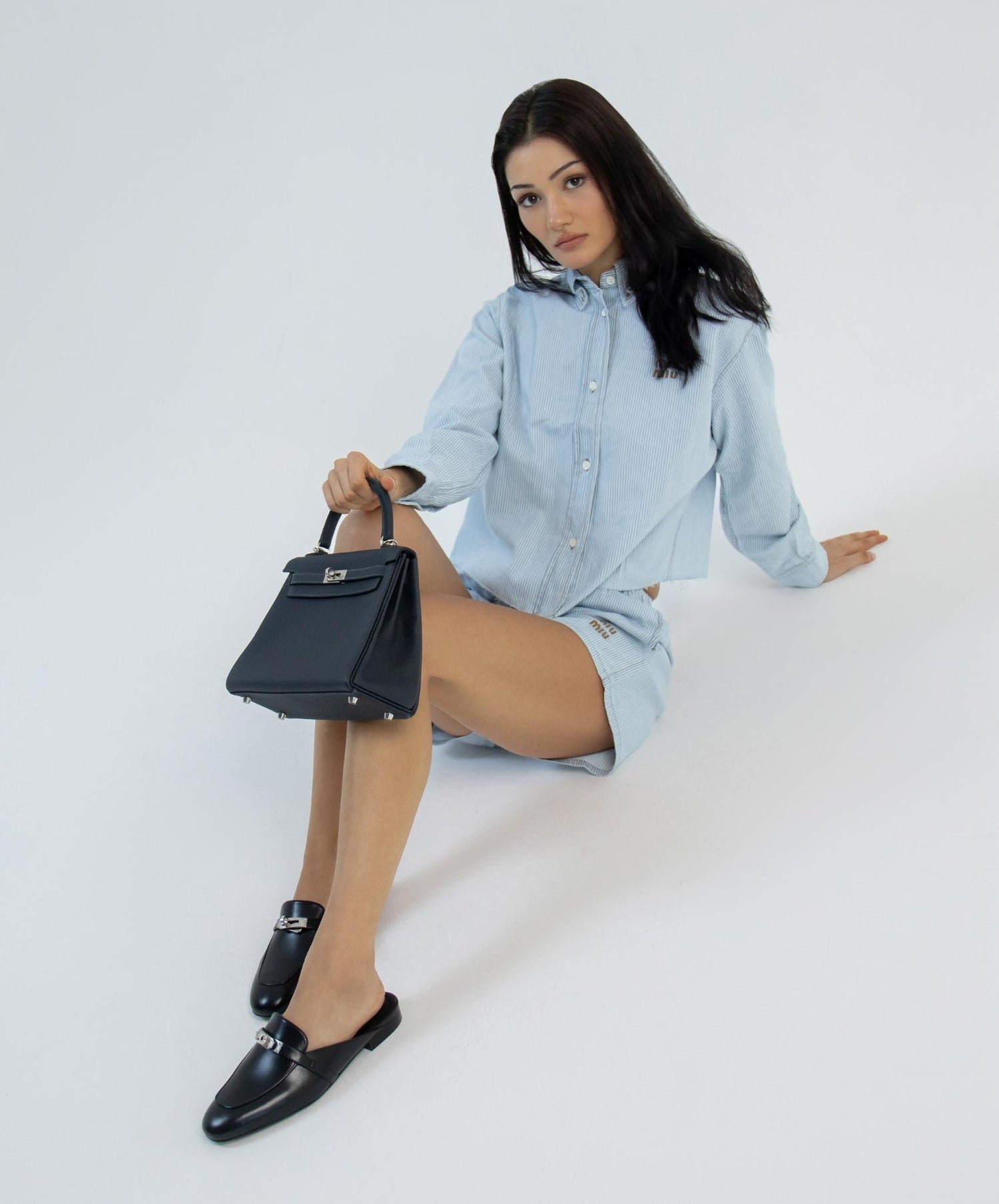

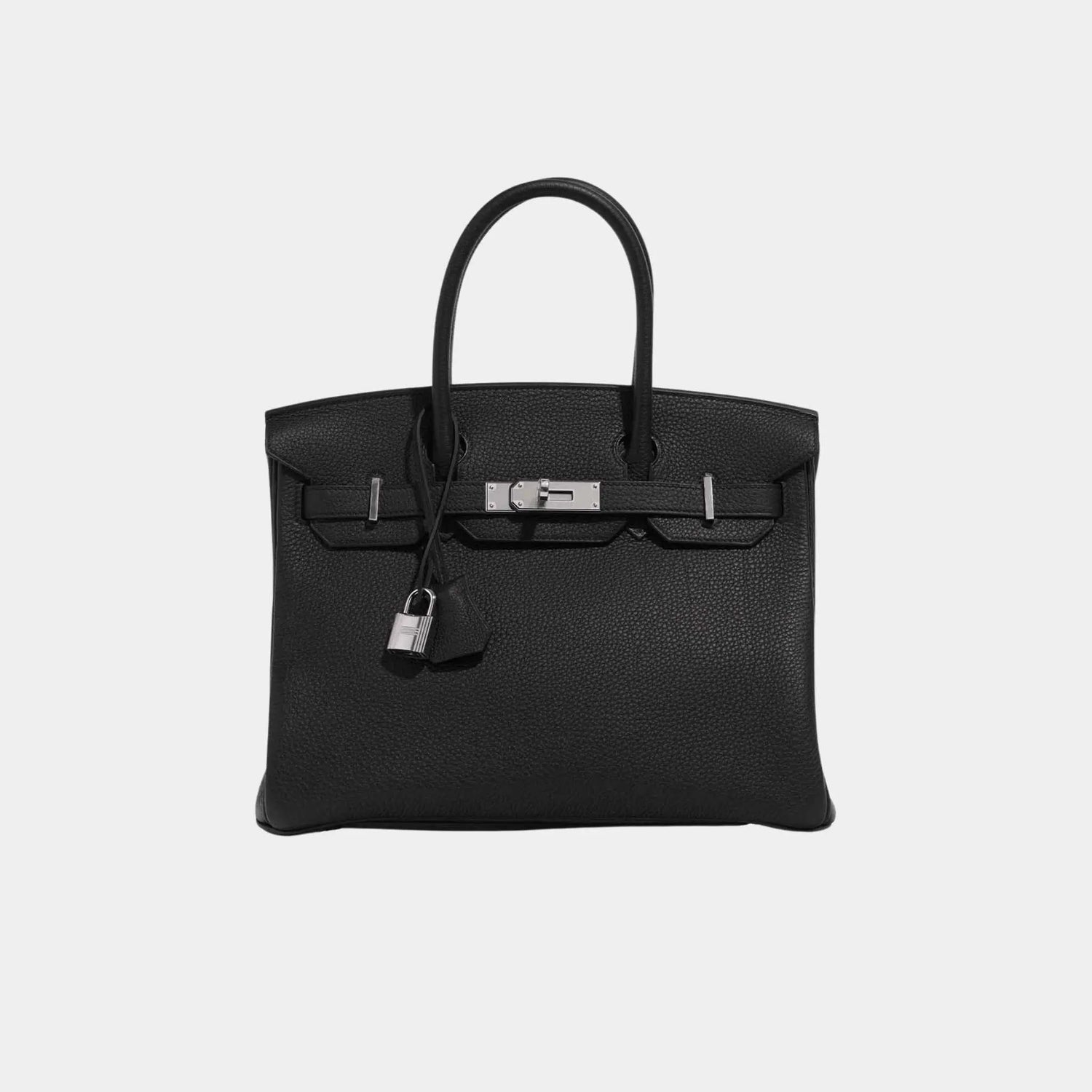
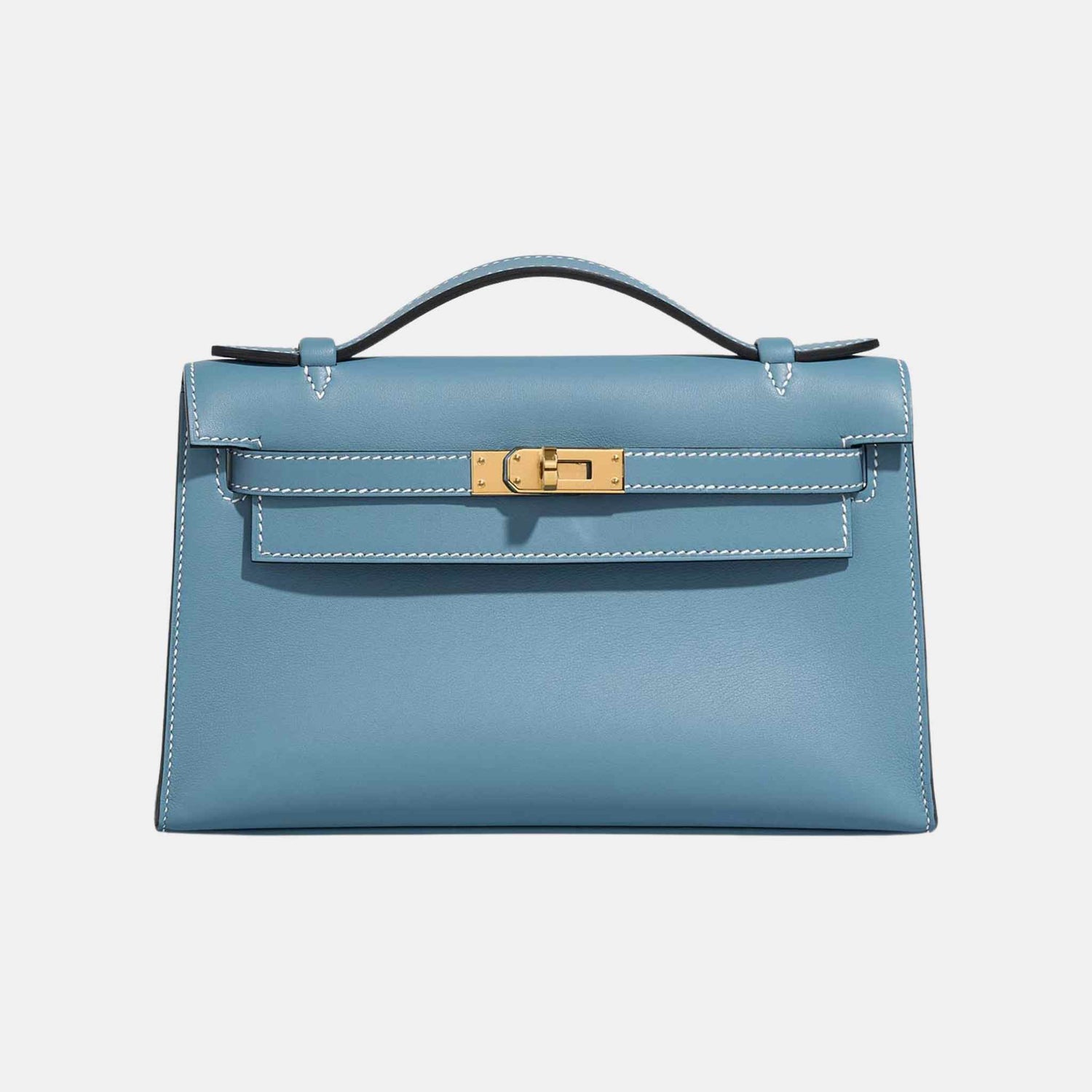
The Icons
The Kelly Bag
Originally called the “Sac à dépêches”, the Kelly bag rose to global fame in the 1950s when Grace Kelly used it to hide her pregnancy from paparazzi. The moment became iconic, and Hermès officially renamed the bag “Kelly” in 1977 to honor the actress and princess.
The Kelly is known for its clean, structured shape, top handle, and signature turn-lock clasp. Each bag is handmade by a single artisan and can take up to 25 hours to complete. It comes in two main styles, Sellier with crisp lines and firm structure, and Retourne with softer curves and a more relaxed look.
The bag is offered in a variety of sizes, from the mini Kelly 20 to the larger Kelly 35 and beyond. Each version suits different needs and occasions, making it a versatile piece in any collection. The Kelly’s timeless style has also inspired other Hermès products, from accessories to footwear, all echoing its refined heritage.
The Birkin bag was created in 1984 after a chance meeting between British actress Jane Birkin and Hermès executive Jean-Louis Dumas on a flight from Paris to London. Birkin mentioned her struggle to find a leather bag that was both elegant and practical. Inspired by their conversation, Dumas designed a spacious, structured tote that would go on to become one of the most iconic handbags in the world.
The Birkin is known for its wide shape, double handles, and secure flap closure with a lock and key. Like the Kelly, each Birkin is handmade by a single artisan, often taking between 18 to 25 hours to complete. It is crafted from a range of luxurious leathers, including Togo, Epsom, Clemence, and exotic skins like crocodile and ostrich.
The bag is available in various sizes, including Birkin 25, 30, 35, and 40, catering to different styles and needs. Its relaxed design and roomy interior make it a favorite for everyday use, while its craftsmanship and exclusivity have turned it into a status symbol around the world. The Birkin has inspired Hermès to create similar accessories, such as travel bags and wallets, that carry the same blend of utility and elegance.
The Picotin is one of Hermès’s most relaxed and understated handbags. Inspired by the shape of traditional horse feed buckets, the design reflects the brand’s equestrian roots while offering modern everyday ease. Its minimalist, open-top design and bucket shape make it a favorite for those who prefer a casual yet elegant look.
Crafted from soft, grained leather like Clemence, the Picotin is known for its slouchy structure and effortless charm. It features a simple leather strap with a padlock closure, staying true to Hermès’s refined approach to detail. Despite its unstructured feel, the bag is durable and designed for daily use.
The Picotin comes in several sizes, including 14, 18, 22, and 26, allowing for flexibility based on lifestyle and needs. It is often available in a wide range of seasonal and classic Hermès colors. Its popularity continues to grow due to its accessibility, practicality, and timeless design — making it a favorite entry point for many into the Hermès world.
The Hermès Oran sandals are one of the brand’s most iconic and popular pieces. First released in 1997, they are instantly recognized by the signature “H” cut-out on the top strap — a clean and elegant design that quietly speaks of luxury.
Each pair is made in Italy using high-quality materials, including smooth calfskin and exotic leathers. Alongside classic options, Oran sandals are also available in rare leathers like lizard skin, crocodile, and ostrich, making them even more exclusive for collectors and style lovers.
They have a flat sole, open shape, and minimal structure, which makes them very comfortable and easy to wear. Whether you're walking around the city or heading to a beach resort, they’re stylish and practical. Hermès often releases them in seasonal colors and limited editions, giving fashion fans plenty of ways to personalize their collection.
The Hermès Chypre sandals combine everyday comfort with modern style. Launched as part of Hermès’s growing lifestyle and casualwear offerings, these sandals feature a sporty look with a wide velcro “H” strap across the foot and a chunky, ergonomic sole designed for support and ease.
Made in Italy, Chypre sandals are crafted using soft calfskin and technical materials, offering a mix of luxury and practicality. They come in a wide range of color combinations, from classic neutrals to bold seasonal shades. For those looking for something even more exclusive, Hermès also offers Chypre sandals in rare and exotic leathers like crocodile and lizard.
Thanks to their adjustable fit and cushioned sole, they’re a favorite for travel and everyday wear. Their fashion-forward shape and quiet branding make them especially popular among those who want understated luxury with a modern edge. Many collectors and style lovers turn to the Chypre as a go-to sandal for both comfort and statement dressing.
The Hermès Izmir sandals are a timeless staple in the brand’s men’s collection, known for their clean lines and minimalist design. With their signature “H” cutout strap, the Izmir is instantly recognizable but remains subtle and refined — ideal for both casual and elegant settings.
Crafted in Italy, the Izmir sandals are made from premium calfskin leather and feature a leather sole for a polished finish. Hermès regularly updates them with seasonal colors, stitching variations, and textured leathers. While black and gold are classic favorites, limited editions can also appear in exotic skins like crocodile or lizard, adding a luxurious edge.
The sandals are lightweight and designed for comfort, making them a go-to option for warm climates or laid-back sophistication. Their understated look appeals to those who want quiet luxury and long-lasting style.
See more
Every Piece, a Masterpiece
Hermès Collaborations: Where Tradition Meets Creativity
Hermès is very selective when it comes to partnerships. Unlike many other luxury brands, it does not often team up with fashion houses or streetwear labels. Instead, Hermès focuses on collaborations that match its values of craftsmanship, tradition, and quiet elegance.
One of the best-known examples is the Hermès × Apple Watch partnership. This collaboration brings together Apple’s technology and Hermès’s leather-making skills. The result is a unique smartwatch with custom Hermès watch faces and hand-stitched leather straps. It feels modern but still keeps the classic look Hermès is known for.
While Hermès may not collaborate often, the few partnerships it chooses reflect quality and purpose. Each one stays true to the brand’s heritage and reinforces why Hermès remains a symbol of timeless luxury.
Materials That Define Hermès
Epsom Leather
Epsom is a stamped-grain leather, meaning its texture is pressed in rather than natural. This gives it a clean, consistent look and makes it incredibly lightweight. It’s resistant to scratches and water, and holds structure exceptionally well, making it perfect for Sellier-style bags and small accessories.
Togo Leather
Togo is made from calfskin and is known for its raised, visible grain and soft-yet-sturdy feel. It’s lightweight, resists sagging, and hides scratches well, making it a favorite for everyday bags like the Birkin. It also ages nicely while maintaining a semi-structured shape.
Clémence Leather
Clémence is slightly heavier than Togo, with a flatter grain and softer feel. Made from bull calf, it gives bags a more relaxed, slouchy appearance, especially in Retourne styles. It’s less structured, so it may lose shape over time, but many love it for its casual, effortless look.
Box Calf Leather
This smooth, classic leather has been used by Hermès since its earliest days. It has a firm hand and a subtle shine, which gives bags a polished, vintage feel. Though it’s prone to scratches, over time it develops a beautiful patina that reflects its age and quality.
Swift Leather
Swift is ultra-soft, fine-grained calfskin with a slightly luminous finish. It absorbs dye very well, resulting in bold, saturated colors. While it’s more delicate and can scratch easily, most marks can be gently rubbed out, and the leather’s vibrant character makes it perfect for statement pieces.
Crocodile Skin
Hermès uses two main types: Porosus (from Australia) and Niloticus (from Africa). Porosus is finer and more expensive, while Niloticus has larger scales. Both are available in shiny or matte finishes. Crocodile bags are marked with special symbols (like a ^ under the Hermès stamp) and are among the most exclusive items Hermès offers.
Ostrich Leather
Recognized by its signature dotted pattern, ostrich leather is soft, durable, and gets better with time. It darkens where handled, which many collectors love as part of its charm. It holds dye beautifully, resulting in rich and often unusual color options.
Lizard Skin
Lizard, typically sourced from Teju or Varanus Salvator species, has a tight, glossy scale pattern and is used for small bags like the Mini Kelly or Constance. Due to its delicacy, it’s not suitable for larger bags and must be kept away from moisture and heat to preserve its fine finish.
Hermès Hardware: Finishing Touches That Matter
Hermès is known for its fine craftsmanship, and the hardware used on its products is no exception. Each piece of hardware from the iconic Birkin and Kelly clasps to buckles on belts and sandals is carefully chosen to match the brand’s commitment to quality and design.
Gold-Plated Hardware
Hermès often uses gold-plated brass for a rich, warm tone. The gold is usually 24k and adds both shine and prestige. You’ll see it on Birkins, Kellys, and other leather goods.
Palladium-Plated Hardware
This silver-toned metal is one of the most popular Hermès options. It’s strong, tarnish-resistant, and gives a cool, modern look. Palladium is often used as an alternative to white gold.
Permabrass Hardware
Softer in color than yellow gold, Permabrass has a muted golden finish. It’s a durable alloy that offers a more subtle tone for those who want something elegant but not too flashy.
Brushed or Matte Hardware
Some Hermès pieces come with brushed finishes — either in gold or palladium — giving them a softer, less reflective texture. This is ideal for those who prefer understated elegance.
Rose Gold Hardware
Though rare, Hermès occasionally uses rose gold hardware on limited edition pieces. Its pinkish hue gives bags a feminine and modern touch.
Ruthenium Hardware
Used mostly in special editions, ruthenium is a dark, gunmetal-toned metal that adds edge and contrast. It’s especially striking on darker leathers or bold designs.
Each Hermès bag or accessory includes matching zippers, feet, buckles, and signature locks all built to last. The hardware is not just decorative, it's part of what makes Hermès pieces feel timeless and distinct.
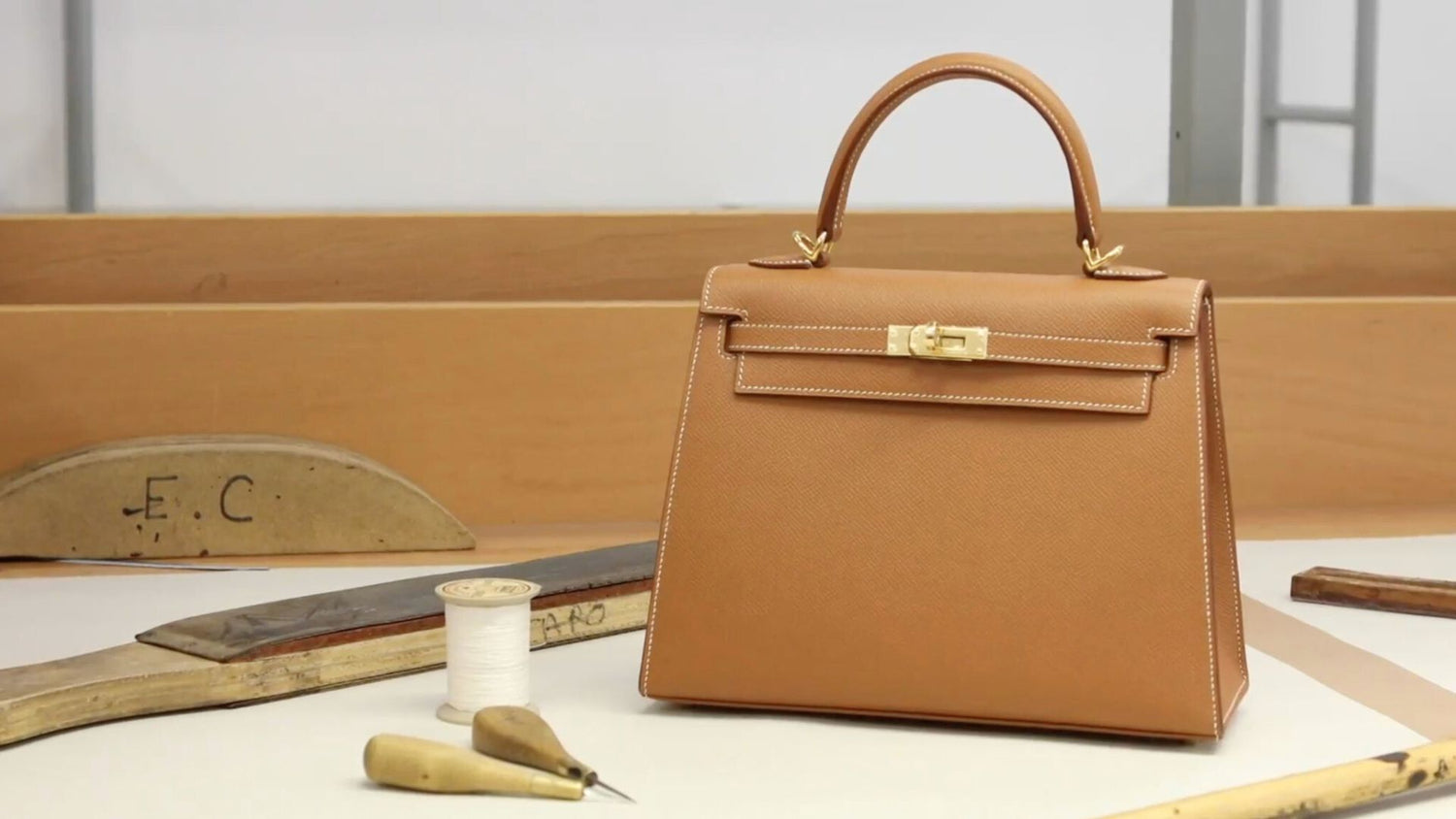
Hermès Repairs and Service
Hermès offers expert repair and maintenance services for its products, from bags and leather goods to watches and jewelry. If your Hermès item needs restoration, you can visit any Hermès boutique to request evaluation. Their team will guide you through the service process, which may include cleaning, hardware repair, re-stitching, or full spa treatments handled by Hermès artisans.
For assistance, you can either contact the nearest boutique or reach out to Hermès directly through their official store locator. The item may be sent to a Hermès workshop in France depending on the service required. Hermès recommends servicing your products only through their authorized centers to preserve the integrity and craftsmanship of the piece.
Hermès and Celebrity Influence
Hermès has long been a symbol of timeless elegance, but its association with global celebrities has played a major role in turning its handbags and accessories into some of the most desirable luxury items in the world. One of the earliest and most iconic moments came in the 1950s when actress and Princess of Monaco, Grace Kelly, famously used her Hermès Sac à dépêches bag to conceal her pregnancy from paparazzi. The image went viral for its time, and in 1977, the brand officially renamed the piece the Kelly bag in her honor.
Equally legendary is the story of the Birkin bag. In 1984, British singer and actress Jane Birkin shared a flight with then-Hermès CEO Jean-Louis Dumas, during which she lamented the lack of elegant yet practical handbags. That conversation inspired the creation of the Birkin bag, which has since become a cultural icon and one of the most sought-after accessories in fashion history.
Today, Hermès bags are regularly seen on celebrities like Kylie Jenner, who owns an extensive collection including rare pieces like the Himalayan Birkin. Her collection has been featured in Vogue and admired across social platforms. Victoria Beckham is also known for her love of Hermès, reportedly owning over 100 bags, aligning her minimalist style with the brand’s refined image. Other stars like Kim Kardashian and Cardi B have displayed their exclusive Hermès pieces on social media, drawing wide attention to limited editions and exotic skin Birkins.
Hermès’s influence also extends to men’s fashion. Public figures like LeBron James have been seen wearing Hermès sweaters and accessories, including scarves and outerwear, showcasing the brand’s relevance beyond handbags. This crossover into menswear demonstrates Hermès’s versatility and status as a quiet symbol of global luxury.
Video from Hermes Youtube
Frequently Asked Questions
How to buy a Hermès Birkin in Dubai or the UAE
Buying a Hermès Birkin in the UAE usually starts with visiting one of the official Hermès boutiques at The Dubai Mall, Mall of the Emirates, or The Galleria Al Maryah Island in Abu Dhabi. These boutiques rarely display Birkins publicly; they’re offered privately to clients who have built strong brand relationships. Because of limited supply, many collectors turn to trusted resellers such as Sands UAE, which helps source authentic Hermès Birkin UAE bags safely and transparently. Always verify authenticity before buying from third parties.
Where to find a Hermès Kelly bag in the UAE
The Hermès Kelly bag is sold through the same boutiques and channels as the Birkin. In Dubai and Abu Dhabi, Hermès stores offer a luxurious shopping experience, but Kelly bags are available only to select clients. To find specific colors or sizes faster, shoppers often work with sourcing experts at Sands UAE, who locate verified Hermès Kelly UAE bags from global partners. This offers more flexibility without the long boutique wait.
Why are Hermès Birkin and Kelly bags so difficult to get
Hermès keeps its production low to maintain exclusivity. Each bag is handmade by one artisan, and boutique allocations are limited. There’s no public waitlist anymore — sales associates decide who gets offered a bag based on loyalty and purchase history. This controlled scarcity has made the Hermès Birkin UAE and Kelly bags symbols of status and sophistication. Building a relationship with the brand or working with Sands UAE is the best way to secure one.
Why are Hermès bags so expensive
Every Hermès bag is handmade from start to finish using top-tier leathers, exotic skins, and precious metals. The process can take 40–50 hours for a single bag. Hermès avoids mass production, keeping supply lower than global demand. According to Business Insider, the exclusivity and craftsmanship are what make Hermès bags “the most coveted luxury items in the world.” In the UAE, taxes and resale value further drive the prices higher.
Are Hermès handbags a good investment
Yes, many experts view Hermès handbags as investment pieces. Birkins and Kellys often appreciate in value — sometimes even outperforming gold. Limited editions and exotic leathers are especially valuable. Collectors in the Hermès UAE market often work with Sands UAE to buy or resell pieces, ensuring authentication and proper pricing in the international resale market.
How to authenticate Hermès bags and accessories
With its unmatched craftsmanship, fine materials, and rich history, Hermès is one of the most admired luxury houses in the world. But its popularity has also led to a rise in counterfeits — not just in handbags, but also in accessories, belts, shoes, jewelry, and even home goods. Whether you're considering a Birkin, an Oran sandal, or a leather bracelet, understanding the key signs of authenticity can help you make a confident purchase.
Craftsmanship That Speaks for Itself
Every Hermès item is made with extreme attention to detail. Handbags like the Birkin and Kelly are stitched by a single artisan using the traditional saddle stitch — a strong, slightly angled hand-sewn stitch that’s nearly impossible to recreate by machine. You’ll also find this level of detail in smaller leather goods, such as wallets and belts, where the stitching remains tight, neat, and consistent.
Stamp and Serial Codes
Most leather Hermès pieces include a discreet blind stamp. On bags, this mark reveals the year of production, the artisan’s workshop, and sometimes their initials. On smaller items like belts or wallets, the stamp may appear inside or behind a loop. From 2015 onward, Hermès started using more hidden placements for these codes. They serve as an important authenticity marker across product categories.
Leathers and Exotic Skins
Hermès is famous for its high-grade leathers like Epsom, Togo, Clemence, and Box Calf. each with its own feel and finish. Items like the Picotin, Constance, and Evelyne often use these leathers. Hermès also offers rare skins like crocodile, ostrich, and lizard across bags, watch straps, and accessories. Genuine Hermès leather feels rich, smells earthy (never chemical), and never looks overly shiny or plastic-like.
Precise Hardware and Logos
Hermès hardware is elegant and weighty. On bags, shoes, and accessories, you'll see "Hermès Paris" etched with sharp, clean lettering — never printed or fading. Buckles on belts or sandals like the Oran or Chypre are solid and smooth, often plated in palladium, gold, or rose gold. Even on fine jewelry and watches, the brand’s engraving is perfectly aligned and finished with care.
Interior Finishing and Linings
The interior of a real Hermès bag or accessory is just as carefully made as the outside. Linings are cut and stitched perfectly, with no loose threads or glue marks. Wallets and pouches have smooth zippers, clean edges, and thoughtful interior layouts. Shoes and sandals are lined with quality leather that feels firm but comfortable, and the soles are cleanly embossed with brand details.
Packaging and Presentation
Authentic Hermès packaging is part of the experience. From the famous orange box to the brown ribbon, everything feels weighty and refined. Dust bags are made of thick cotton flannel, printed with a subtle Hermès logo in a double circle. Smaller accessories like scarves and bracelets come in appropriately sized boxes, while homeware and ready-to-wear are carefully folded and packed.
What are Hermès Oran sandals and why are they popular
The Hermès Oran sandal is an iconic flat with the brand’s “H” strap design. It’s loved for being simple, stylish, and comfortable. the Oran has become a summer wardrobe essential across the Middle East. The sandals come in new colors each season and are perfect for both casual wear and travel. For exclusive shades not in stores, shoppers often turn to Sands UAE to find limited-edition Orans.
What are the most popular Hermès accessories to buy in the UAE
Beyond handbags, Hermès is known for its silk scarves, enamel bracelets, H-buckle belts, and small leather goods. The carré scarf has been a style icon since 1937, while the Clic Clac H bangle remains a favorite among UAE fashion lovers. Many shoppers also explore Hermès fragrances, ties, and home goods for gifting. Sands UAE helps clients find both boutique-fresh and rare collector accessories from around the world.
What is the difference between a Hermès Birkin and a Hermès Kelly bag
The Birkin has two handles and a relaxed, open design, making it practical for daily use. The Kelly has one handle, a structured body, and a clasped flap, giving it a more elegant, formal feel. Both are handmade and equally coveted. Collectors in Hermès UAE often see the Birkin as “effortless chic” and the Kelly as “timeless grace.” Owning both represents the complete Hermès lifestyle.
What are Hermès exotic leather and limited-edition bags
Exotic Hermès bags are crafted from rare skins like crocodile, alligator, ostrich, or lizard. Limited editions feature unique color combinations or rare hardware finishes such as “So Black” or “Touch Birkin.” These pieces are extremely rare and mostly reserved for VIP clients. Many Hermès UAE collectors use Sands UAE to find and authenticate exotic or one-of-a-kind Hermès creations.
Which Hermès boutiques are located in Dubai and Abu Dhabi
Hermès operates three official UAE boutiques:
The Dubai Mall – Fashion Avenue
Mall of the Emirates – Ground Floor Luxury Wing
The Galleria Al Maryah Island – Abu Dhabi
All stores offer handbags, fashion, jewelry, and home décor. For rare pieces like a Hermès Birkin UAE or custom orders, Sands UAE provides concierge sourcing and delivery across the Gulf.
What is the Hermès purchase quota for Birkin and Kelly bags
Hermès limits each client to two quota bags per year, generally one Birkin and one Kelly. This system keeps the brand exclusive and fair for loyal customers. Even high-profile clients in Hermès UAE follow this rule. Many collectors turn to Sands UAE to find their second bag of the year or a special edition outside the quota system.
Can you buy a Hermès Birkin or Kelly online
Hermès rarely sells Birkins or Kellys online. The official Hermès website only lists smaller handbags, shoes, and scarves. If you see a Birkin listed online, it’s almost always through a reseller. The safest way to buy online is via certified platforms or a verified concierge like Sands UAE, which guarantees authenticity and handles secure worldwide sourcing for Hermès Birkin UAE clients.
What is a Hermès Special Order Horseshoe Stamp bag
A Special Order, marked with a tiny horseshoe symbol near the logo, is a personalized Hermès bag created for elite clients. Buyers choose their own color, leather, and hardware combination, making each one unique. These bags are handmade in France and take months to complete. In the UAE, Sands UAE assists serious collectors in acquiring or reselling these ultra-exclusive pieces.
What is the most expensive Hermès bag ever sold
The most expensive Hermès bag to date is Jane Birkin’s original Birkin, auctioned for over $10 million in 2025. The Himalaya Birkin, made from rare white crocodile skin and diamond-encrusted hardware, is another record-setter, often selling for half a million dollars. These sales prove why Hermès bags — including those found through Sands UAE — are prized assets in global luxury collecting.
Does having a purchase history with Hermès help you get a Birkin
Yes. Hermès rewards loyal customers who buy regularly across categories like scarves, shoes, and homeware. These relationships help you get priority for quota bags. Many Hermès UAE clients enjoy shopping both at boutiques and through Sands UAE, which finds rare bags while they continue building their brand relationship in-store.
Is there still a waitlist for Hermès Birkin and Kelly bags
The old public waitlist no longer exists. Each boutique now manages its own client list and decides who gets an offer. Patience, frequent store visits, and consistent spending can improve your chances. For those who prefer not to wait, Sands UAE provides access to ready-to-buy, authenticated Hermès Birkin UAE and Kelly bags from global collections.
How to care for and maintain Hermès handbags
Keep your Hermès bag stored upright in its dust bag, filled with soft tissue to hold its shape. Avoid water, sunlight, or hanging it by the handles. Wrap the handles with Hermès Twilly scarves to protect them from wear. For cleaning or repairs, use the official Hermès Spa service available in UAE boutiques. Sands UAE can also assist with professional restoration and care advice for luxury bags.
Why is the Hermès Kelly bag named after Grace Kelly
The Kelly bag is named after Princess Grace Kelly of Monaco, who famously used it in the 1950s to shield her pregnancy from photographers. The image became iconic, and Hermès officially renamed the bag in her honor. Today, the Kelly stands as a symbol of grace, refinement, and femininity — admired by collectors across Hermès UAE and beyond.
Does Hermès ever go on sale or offer discounts
Hermès almost never discounts its handbags. Occasionally, private sales include ready-to-wear or scarves, but never Birkins or Kellys. Prices at Hermès UAE boutiques stay consistent year-round, which helps maintain their resale value. If you’re searching for rare or sold-out pieces, Sands UAE can help you find authentic options at fair secondary-market prices.
Explore More from Sands UAE
For more insights into luxury sourcing, authentication, and personal shopping, visit our full FAQ page or connect with us on Instagram, Facebook, and LinkedIn to discover the latest arrivals and features.
Experience the world of curated luxury — where every detail reflects the Sands UAE standard of excellence.
Collections
Every Hermès piece is more than an acquisition—it’s a legacy of craftsmanship and elegance waiting to be lived.

HERMES BEST SELLER
Pair text with an image to focus on your chosen product, collection, or blog post. Add details on availability, style, or even provide a review.
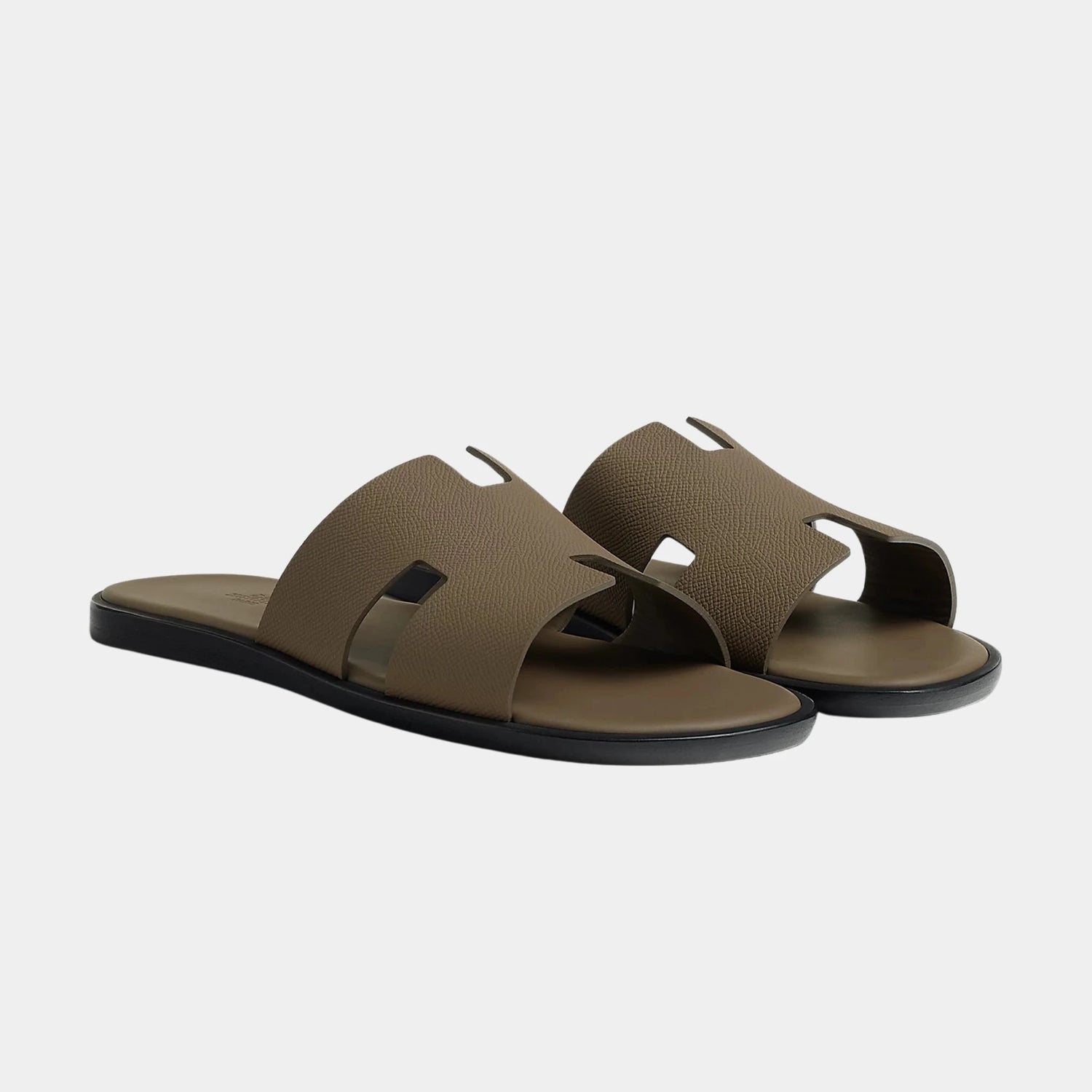
HERMES MEN COLLECTION
Pair text with an image to focus on your chosen product, collection, or blog post. Add details on availability, style, or even provide a review.


